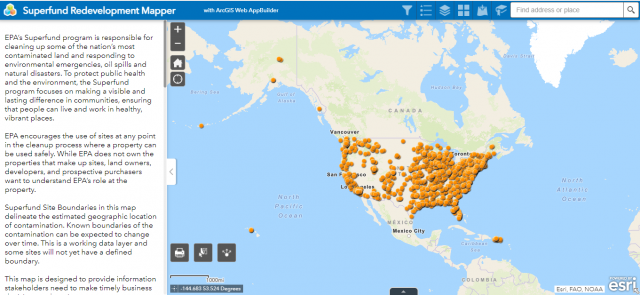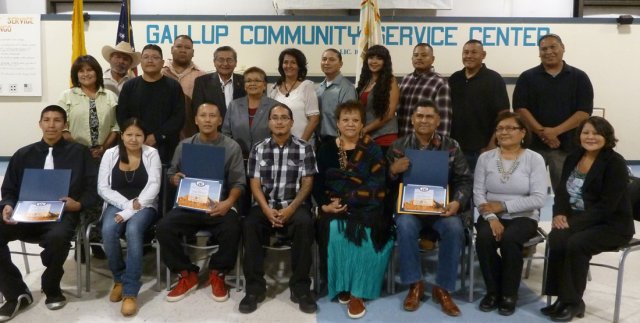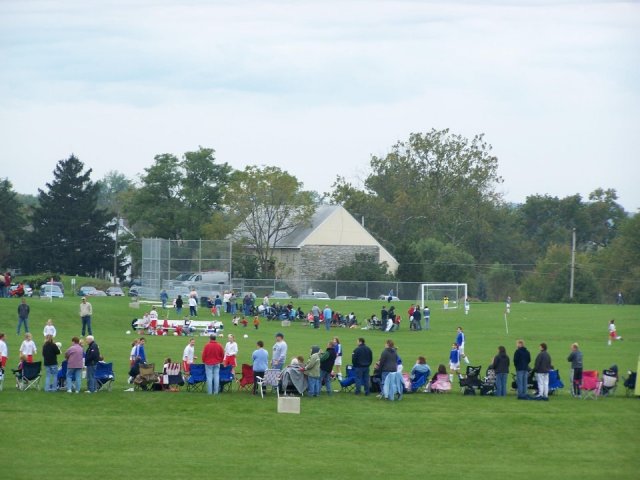Redevelopment Tools for Communities

Returning Superfund sites back to productive use is part of EPA's mission, and there are benefits for all parties involved. Reuse benefits communities by creating jobs, increasing the tax-base and revitalizing neighborhoods and restoring a sense of community by bringing housing, retail, recreation or ecosystem services. Often these are underserved and underrepresented communities. Reuse discussions build trust and relationships between EPA and communities, and set the focus on future opportunities for the community.
Community involvement is the process of engaging in dialogue and collaboration with community members. The goal of Superfund community involvement is to advocate and strengthen early and meaningful community participation during Superfund cleanups. EPA works with communities to promote reuse that can support broader neighborhood revitalization and equitable reinvestment.
The tools and resources below can assist communities with site related information and decision-making.
- Mapping Applications
- Reuse Planning Support & Technical Assistance
- Superfund Redevelopment Using Opportunity Zone Tax Incentives and Leveraging Opportunity Zones for Community Revitalization
- Superfund Community Involvement
- Ready for Reuse (RfR) Determinations
- Revitalization Handbook – Revitalizing Contaminated Lands: Addressing Liability Concerns
Mapping Applications
-

People use this mapping application to explore new development opportunities at Superfund sites. Search filters include Superfund site locations and related data layers, such as site details, community context, renewable energy potential, demographics, environmental conditions and infrastructure considerations. These features enable users to tailor reuse queries for specific areas and evaluate them quickly and easily.
- Opportunity Zones Mapper
The OZ Mapper includes:- Environmental, health, social, and economic data that are critical for understanding and advancing community revitalization goals.
- Data about each Opportunity Zone, such as the presence of brownfields, flood plains, impaired waters, air quality nonattainment areas, walkability scores, areas with limited access to food, and other data that might factor into a community's vision for redevelopment.
- Data from several government agencies, including EPA, Centers for Disease Control and Prevention, U.S. Census Bureau, and the Federal Emergency Management Agency, as well as a map feature that allows users to explore and visualize a broader group of data layers on health and environmental factors.
- Superfund Sites and Opportunity Zones StoryMap
This StoryMap provides information about how Opportunity Zone tax incentives can be used to redevelop sites. Redevelopment of current or former Superfund sites may qualify for Opportunity Zone tax benefits.
Documents and Other Resources
- Reuse Planning Support & Technical Assistance

Each year, EPA’s Superfund Redevelopment Program (SRP) provides reuse planning and technical assistance to EPA Regions in the form of “Regional Seeds” to support the productive reuse and redevelopment of Superfund sites. The purpose of Regional Seeds is to provide EPA site teams stakeholders and communities with an initial “seed” of support and technical assistance to facilitate redevelopment, remove barriers to productive reuse, and ensure future use is well aligned with the cleanup and removal/remedial process. These projects thoughtfully and thoroughly engage communities, providing key information that informs Agency decision-making regarding site cleanup and potential Superfund redevelopment opportunities. The projects lay the foundation for new reuses, leading to strengthened local economies and much-needed community amenities.
- Superfund Redevelopment Using Opportunity Zone Tax Incentives and Leveraging Opportunity Zones for Community Revitalization
Opportunity Zones are a powerful way to encourage revitalization in economically distressed communities. Redevelopment of current or former Superfund sites may qualify for Opportunity Zone tax benefits.
- Superfund Community Involvement
These web pages provide general information about technical assistance, tools and resources, and regional contacts for Superfund community involvement. - Ready for Reuse (RfR) Determinations
An EPA Ready for Reuse (RfR) Determination provides a technical determination that a site is “ready for reuse” and will remain protective of human health and the environment for that use, so long as any use limitations established by EPA continue to be met.
-

The Revitalization Handbook discusses potential liability concerns associated with cleanup and reuse of Superfund sites and shares tools to address them.
- Innovative Redevelopment at Superfund Sites: Supporting Healthy, Sustainable and Equitable Communities (PDF)
This fact sheet highlights innovative projects at Superfund sites that support healthy, sustainable and equitable communities.
- Pilot Framework for Integrating Community Health and Wellness into the Superfund Reuse Assessment Process (PDF)
This document describes health and wellness considerations that can be integrated directly into each step of the Superfund reuse assessment process.
- Reuse Assessments: A Tool to Implement the Land Use Directive (PDF)
This 2001 document reaffirms the original Land Use Directive (see above) and expands upon EPA's framework for developing future land use assumptions when making remedy selection decisions for Superfund sites.
